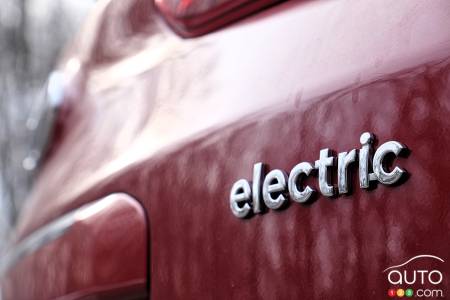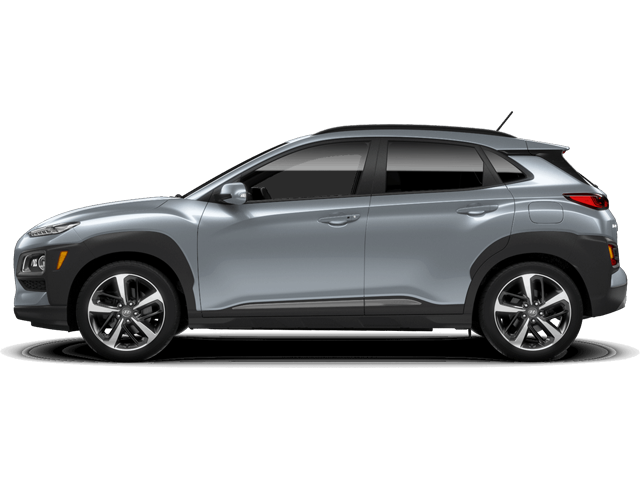When the 2017 Hyundai Kona was first presented, the strategists at the company’s Canadian division were very bullish on the interest that the new small crossover was generating. Since then, the smaller sibling to the Tucson and Santa Fe has more than held its own sales-wise in a flourishing category. In fact, according to Hyundai Canada, the Kona is now the best-selling subcompact SUV in the country.
Now, after a long wait and the generation of much buzz across the industry, Hyundai presents a new all-electric version, a Kona you can plug in at home or a fast-charging station anywhere.
I recently put the 2019 Kona Electric to the test during an unusually cold, wintry week in March, the perfect occasion in fact to put to the test the capabilities of this challenger to the Chevrolet Bolt and upcoming Nisan LEAF Plus. And by capabilities, I mean those that it demonstrates when faced with the realities of a Canadian winter. Because those realities can pose a real challenge to any EV, no matter what badge is on the back, and they represent the biggest weakness of these types of vehicles. That said, they can be perfectly serviceable for Canadian motorists.
See also: Comparison of the 2019 Hyundai Kona vs the 2019 Mazda CX-3
Specifications for the 2019 Hyundai Kona Electric
.jpg?scaledown=450)
What you need to know about the Kona Electric
So how is this little crossover EV different from its combustion-engine sibling? Let’s look at the similarities and the most notable differences.
For starters, the Kona Electric retains the pleasing shape of the pocket SUV’s regular version, with a few minor changes. The front end, most notably, loses the traditional front grille in favour of a panel that houses the slot for plugging in the charging cable – simply press on the little door to make it open. The lower part of the front end is also smoother than the regular Kona.
The exclusive alloy wheels are another immediately eye-catching feature. These are designed in fact to improve the coefficient of drag of the vehicle, along with other elements underneath the chassis. There is, of course, no exhaust tube, and the “electric” badging makes clear that this here is a zero-emissions vehicle.
Hyundai also modified the choice of colours available for the exterior, with some new ones being offered only for the EV version. Part of the effort to differentiate the Kona electric from all the other Konas on our roads…
.jpg?scaledown=450)
Despite its urban adventurer demeanour, the Kona Electric does not get all-wheel drive, in contrast with the range-topping versions of the gas-powered Kona. The mechanics of the EV are located under the front wheels and “pull” the car. In other words, there’s no second motor to help propel the Kona Electric like there is in many of the premium electric models on the market. Now, at $45,000+ the Kona Electric certainly doesn’t come cheap, but it doesn’t target the same consumers as the Tesla Model S or Jaguar I-PACE, for instance.
In any event, Hyundai is to be commended for its savvy planning in designing the Kona from the outset to be able to accommodate an electric version.
The Kona Electric costs more than the Kona 1.6T, but it’s also more potent when you press on the accelerator. With 201 hp and 290 lb-ft of torque at its disposal, the Kona Electric doesn’t mind aggressive accelerating, or even a bit of burning rubber for that matter. This point was brought home to me on a few occasions when I deactivated the anti-skid function and took advantage of cold tires in the morning. The Kona Electric is a real burnout machine, if that’s what turns your crank.
The lithium-ion battery pack of the Kona Electric has a capacity of 64 kWh and a theoretical maximum range of 415 km. As mentioned, though, this number takes a hit when the weather gets nordic. Though when the temperatures climb, this range is close to attainable in real-world driving and it proves satisfyingly adequate.

As do other electric vehicles on the market, this Hyundai crossover can be driven in any of several drive modes to suit the needs or preferences of the driver. Eco mode is obviously designed to reduce the performance of the Kona in order to extend the range. Normal is the default mode on startup and is suitable for most driving situations.
As for Sport mode, it allows the driver to let loose a little bit, especially during accelerations. Take note that the paddle shifters behind the wheel don’t serve you in this capacity. They’re not for changing gears manually, but rather they adjust how much energy recovery you get from the slowing of the engine when you let go of the accelerator pedal. In its most aggressive setting, the vehicle practically stops itself when you’re in city traffic, and you won’t make much use of the brake pedal at all.
The interior is very similar to that of the regular Kona, but it’s not quite identical. The central console is placed much higher, while underneath it you get a storage space for gloves and tuques and whatnot. The gear shifter is replaced by four buttons for choosing drive, reverse, park, etc., while some of the climate control commands have been replaced due to the greater separation between the two front seats.
The location of the battery pack under the floor steals nearly 3 cm of space from the rear-row passengers, as their seating is placed higher in the cabin than in the gas-powered Kona.
.jpg?scaledown=450)
Charging
A full charge of the battery takes about nine hours using a 240-volt station. If you’re in a hurry, a super-fast Level 3 station recharges the Kona electric in 55 minutes or less. As for a regular 110-volt plug, charging to 100% will take you a long time… a very long time. I know because I tested it out; for a full-on EV like the Kona Electric, getting a dedicated Level 2 charger installed at home is a virtual must.
At the wheel
This is obvious but it bears repeating: starting up an electric car produces no sound. The Kona Electric does add a futuristic little touch by producing an “electronic” melody when coming off the line, which adds a pleasant bit of spice to the experience. Beyond a certain speed, however, this melody disappears. Then it’s just you and the tires rolling on the asphalt. It’s quite something, especially when at speed on the highway.
As mentioned, accelerations are impressive every time you apply pressure to the right pedal. The Kona Electric isn’t even the quickest EV on the market, but no matter, driving pleasure is part of the deal in daily driving. Steering is on the light side, but it doesn’t impinge on what the car is meant to do.
Also as mentioned, the paddles on the steering wheel have to do with the level of energy recovery you want; the system does necessitate an adjustment period, but once you’re accustomed to it, you get the nuances between the settings and how to ease up on the accelerator pedal to get stopping power.
.jpg?scaledown=450)
Winter range
Now, as for the range of the Kona Electric in wintertime driving conditions. The maximum range gets a good chunk chopped off of it when the temperatures dip below freezing, no way around it. My best performance during my week of driving it? 240 km of theoretical range (range as defined by the onboard computer), when the car hadn’t been warmed up beforehand. And if I gave in to the urge to get aggressive with the right pedal, that displayed range dropped to 220 km after a kilometre or two. Driving an EV requires adjusting to its realities, especially when the battery pack is very cold.
Take heart, though: once you’ve driven a few clicks and the powertrain’s internal organs start to warm up, the displayed range starts to climb back up again, even when you’re in motion. This I was able to confirm as I headed out for a weekend trek in the mountains.
The last word
The 2019 Hyundai Kona Electric is still not the be-all-end-all solution when it comes to switching the masses over to electric vehicles. In winter, the range takes such a hit that if you’re not sure of having a place to recharge, longer-distance drives are still not possible or wise. In summer, though, it’s a whole different story.
The more I think about this EV, however, I can’t help but see the potential it represents, at least for consumers who can afford to pay the cost of this vehicle. There are still the incentive programs in place in British Columbia and Quebec, and of course the federal government has just announced plans to institute its own rebate program for EVs. For sure these go a long way to making a vehicle like this affordable for more consumers. Of course, the thought of being able to forego trips to the gas pump altogether is a pretty powerful incentive in its own right.
Wintertime range loss notwithstanding, the 2019 Hyundai Kona Electric is starting from a very popular regular model and adding zero-emissions temptation to the mix. It could win over a lot of Canadian consumers in the coming months…
Road Tests and Reviews






fr.jpg?scaledown=450)

